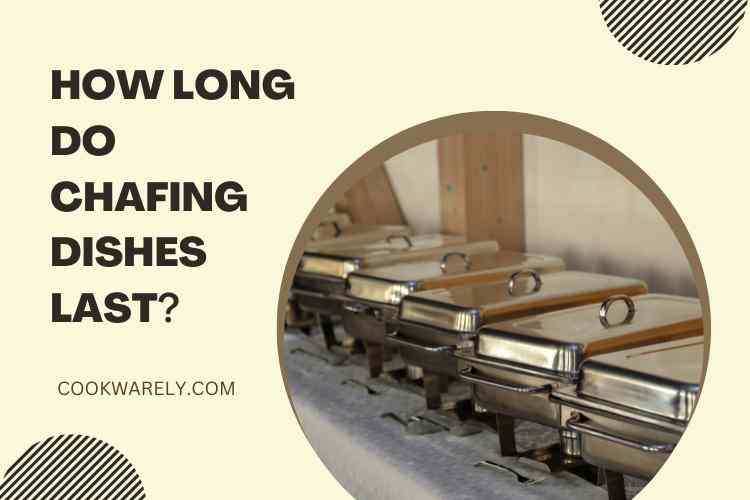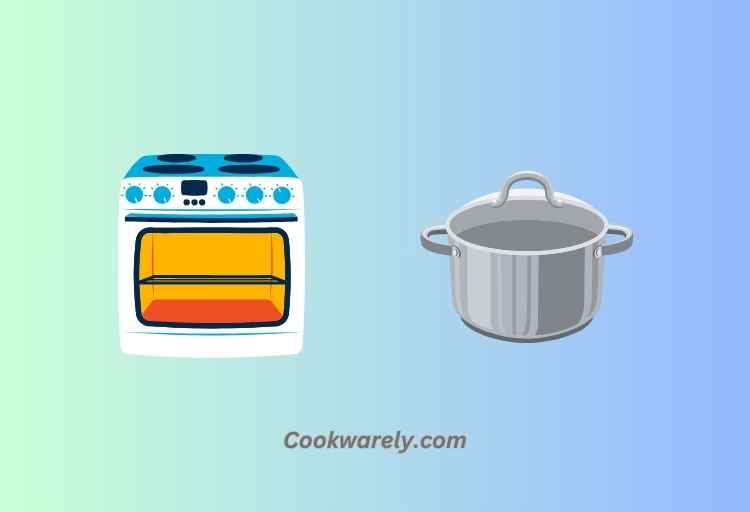Are Pitted Stainless Steel Pots Safe To Use? Yes!
Pitting can create crevices where bacteria may grow and contaminate food. Cooking acidic foods in pitted pots may lead to the leaching of harmful metals into food.
It’s usually safe to use a stainless steel pot that has small pits if you take good care of it. But if the holes are big, it might be safer to get a new pot.
Pitted stainless steel pots can pose a risk when food particles get trapped, potentially causing contamination.
However, shallow pitting can be remedied by polishing at buffing or plating shops, eliminating the risk. Proper maintenance ensures safe use.
- Pitting can affect how your food cooks and tastes, especially if it’s severe.
- You can fix small pits with special cleaners, but big ones might not be fixable.
- High-quality pots are less likely to get pits, and if you need to replace a damaged pot, recycle it properly.
7 Considerations When Using Pitted Stainless Steel Pots
| Consideration | Explanation |
|---|---|
| Pitting Severity | Minor pitting may be manageable, but severe pitting may require replacement. |
| Bacterial Contamination Risk | Pitting can create crevices where bacteria may grow, risking food contamination. |
| Metal Leaching Risk | Cooking acidic foods in pitted pots may lead to the leaching of harmful metals into food. |
| Impact on Cooking | Pitting can affect the even distribution of heat, potentially affecting the flavor and texture of food. |
| Preventive Care | Avoid prolonged exposure to high heat. Use lower heat settings. Clean pots with mild agents like dish soap and warm water, avoiding harsh chemicals. |
| Repair Options | Minor pitting can often be repaired with specialized cleaning products. Severe pitting may not be repairable, and pot replacement may be necessary. |
| Quality of Cookware | Pots made with higher-quality materials are less likely to develop pitting. |
Key Takeaways
- Pits in stainless steel pots can let bacteria in and might make metals get into your food.
- Minor pits can be okay, but big ones might mean you need a new pot.
- To keep your pot safe, use lower heat, be gentle when cleaning, and check for pits regularly.

Are Pitted Stainless Steel Pots Safe To Use?
Is It Safe to Use Pitted Stainless Steel Pots? Pitted stainless steel pots are a common occurrence in many kitchens, often the result of wear and tear over time.
These pots exhibit small holes or pits on their surfaces, which can raise questions about their safety for cooking. Let’s delve into this issue to understand why pitted stainless steel pots can be safe for use.
One of the primary concerns with pitted stainless steel pots is the potential for food particles and bacteria to get trapped in these tiny crevices. This can understandably lead to worries about food safety and contamination.
However, it’s essential to recognize that the safety of using such pots largely depends on the severity of the pitting.
Minor pitting, where the holes are shallow and not too extensive, is generally manageable and should not deter you from using the pot.
In fact, many pots with minor pitting can continue to serve you well in the kitchen. The key lies in proper maintenance and cleaning practices.
If you encounter shallow pitting on your stainless steel pot, there’s good news: you can often remedy this concern by polishing the affected areas.
Buffing or plating shops have the expertise and tools to help eliminate the risk associated with these small pits, restoring the pot’s usability without compromising safety.
To ensure the safe use of pitted stainless steel pots, proper maintenance is essential. This includes using gentle cleaning agents, such as dish soap and warm water while avoiding harsh chemicals and abrasive scrubbers.
Regularly inspect your pot for any signs of worsening pitting to address the issue promptly.
Can Pitted Stainless Steel Be Used in a Dishwasher?
Pitted stainless steel can be used in a dishwasher, but it may not be as effective as other materials. Pitted stainless steel is more likely to harbor bacteria and other contaminants than other materials, so it is important to clean it thoroughly before using it in a dishwasher.
What Are the Pros and Cons of Using Pitted Stainless Steel?
There are a few pros and cons to using pitted stainless steel. A pro would be that it is a very strong and durable material. It is also resistant to rust and corrosion. A con would be that it is difficult to clean and keep clean. It is also a bit more expensive than other materials.
Pitted stainless steel pots are a popular choice among home cooks. The idea behind the process is that it makes the surface harder and more resistant to wear.
However, this process also makes it easier to get rust on the surface, which can cause food to stick and the pot to smell.
How to Care for Your Pitted Stainless Steel Cookware?
Pitting is a natural part of the life of a stainless steel pot or pan. But it’s important to know how to care for your pots and pans to keep them in good condition.
- It’s important to keep the inside of your cookware clean and free from food residue.
- While you can use a dry cloth, a kitchen sponge is better because it’s easier to clean.
- When washing your cookware, be sure to scrub the inside thoroughly.
- As soon as you’ve cleaned it, dry it with a soft towel.
- Use a dry cloth to wipe away any residual water.
- Never use hot water or detergent when cleaning your pots and pans.
- Never put your pots and pans in the dishwasher.
When Should You Throw Away Stainless Steel Pans?
One factor that may contribute to the longevity of a stainless steel pan is how often it is used. If a pan is only used occasionally, it is likely to last longer than one that is used on a daily basis. This is because pans that are used more often are exposed to more wear and tear, which can lead to scratches, dents, and other damage.
Another factor that can affect the lifespan of a stainless steel pan is how it is cared for. Pans that are washed by hand and dried immediately after use are less likely to develop rust and other forms of corrosion than those that are washed in the dishwasher.
Additionally, it is important to avoid using harsh cleaning chemicals or abrasive scrubbers on stainless steel pans, as these can also damage the surface.
Finally, the quality of the pan is also a factor to consider. Higher-quality pans are made with thicker, more durable stainless steel, which is less likely to scratch, dent, or corrode over time. Additionally, higher-quality pans often have a warranty, which can provide replacement or repair coverage if the pan is damaged.
In general, stainless steel pans can last for 10-20 years with proper care. However, the exact lifespan will vary depending on factors such as how often the pan is used and how it is cared for.
How Do You Get Rid of Pitted Stainless Steel?
The most common way to get rid of pitted stainless steel is to use a chemical process called electropolishing. This process uses electrical current to remove the pitted areas of the metal. The electropolishing process is typically done by a professional, but there are kits available for purchase that allow you to do it yourself.
Another way to get rid of pitted stainless steel is to use a process called bead blasting. This process uses small beads of glass or other materials to remove the pitted areas of the metal. Bead blasting is typically done by a professional, but there are kits available for purchase that allow you to do it yourself.
If you have pitted stainless steel that is not too bad, you may be able to remove the pits with a scrubbing pad or brush. This will not remove all of the pits, but it can help to improve the appearance of the metal.
If you have pitted stainless steel that is too far gone to be repaired, you may need to replace it. This is not a difficult process, but it is best to have a professional do it for you.
Conclusion
In conclusion, whether pitted stainless steel pots are safe depends on factors like the severity of the pitting.
Proper care, gentle cleaning, and investing in quality cookware can go a long way in preventing pitting and ensuring the safety of your cooking utensils.
By following the provided tips, you can enjoy safe and reliable stainless steel pots for your culinary adventures.





